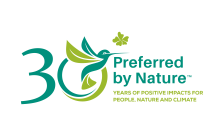Our Timber Legality Risk Assessment for Thailand from 2017 forms the basis of our information available for Thailand. However, in collaboration with local forest legality experts we have identified changes in applicable legislation and updated the list of legality risks related to harvesting, trade and transport in Thailand to reflect the situation in the country as of 2021. These updates have been captured in our new toolkit for Thailand. which incude a List of Applicable legislation, Risk Mitigation Guide and a Document Guide. This country page for Thailand has been updated to reflect the newest changes captured in our toolkit.
Timber Risk Score: 28 / 100 in 2017. The Timber Legality Risk Assessment contains an evaluation of the risk of illegality in Thailand for five categories and 21 sub-categories of law. We found:
- Specified risk for 11 sub-categories.
- Low risk for 6 sub-categories.
- No legal requirements for 4 sub-categories.
This page provides an overview of the legality risks related to timber produced in Thailand.
Thailand has approximately 16.4 million hectares of forested land, covering almost one third of the country, of which:
- Around 35% is primary forest
- 44% is naturally regenerated forest
- 21% is planted forest (FAO, 2015).
Thailand is a major exporter of wooden furniture, sawn timber, and paper, among other timber-based products. In 2012, 18 million m3 RWE, worth $4 billion, were exported. Most of the timber that supplies the processing industry either comes from domestic plantations (approx. 8.7 million m3) or is imported (approx. 10 million m3), mainly from Cambodia, Laos and Myanmar (Lawson, 2014).
Several legality risks are present in Thai timber supply chains. The risks are wide ranging and relate to legal rights to harvest, timber harvesting activities, and trade and transport. If you are sourcing timber from Thailand you should take care to ensure the extensive risks identified are not present in your supply chains, or have been sufficiently mitigated.
Log export ban: Ban on exports of raw logs from natural forests
There are currently no armed conflicts in Thailand according to the Council on Foreign Relations' Global Conflict Tracker.
According to the Uppsala Conflict Data Program there were 1286 deaths from 2010-2019.
VPA status: Negotiating
CITES appendix II: Aquilaria spp., Dalbergia spp., Rauvolfia serpentina.
FSC Certified Forest Area: 120,300 hectares (2020).
Information Gathering
Timber sources
- Find out the different sources of legal timber
- Determine which source type your timber comes from
| Timber source type | Classification | Description of source type |
|---|---|---|
|
Registered Plantations |
National Forest Reserve, Forest outside National Forest Reserve and Private Land |
Registered Plantations under the Forest Plantation Act B.E. 2535 (1992) and the Forest Plantation Act (No. 2) B.E. 2558 (2015) in National Forest Reserves. State owned registered plantation may be managed by the state, state-owned enterprise, or corporations. Privately owned registered plantations are managed by individuals. Plantation operators register the plantation with Royal Forest Department. Once approved, Plantation Certificate Sor Por 3 is issued to the plantation operator. Before harvesting, the plantation operator must obtain the following documents: Plantation registration and relevant documents apply to all registered plantations |
|
Timber from State-owned registered plantations outside National Forest Reserve |
National Forest Reserve |
State-owned plantations (not registered under the Forest Plantation Act B.E. 2535 (1992) and the Forest Plantation Act (No. 2) B.E. 2558 (2015)) in National Forest Reserves. Plantation (non-registered) May be managed by the state, state-owned enterprise, individuals, or corporations. Permission related to access: |
| Forest outside National Forest reserve |
State-owned plantations (not registered under the Forest Plantation Act B.E. 2535 (1992) and the Forest Plantation Act (No. 2) B.E. 2558 (2015)) outside National Forest Reserves. May be managed by the state, state-owned enterprise, individuals, or corporations. Permits related to access: Before the 15th of April 2019: After the 15th of April 2019 : |
|
| Plantations and Natural Forest (Non-registered) |
Private |
Private forest and plantations. Plantations not registered under the Forest Plantation Act B.E. 2535 (1992) and the Forest Plantation Act (No. 2) B.E. 2558 (2015). Before the 15th of April 2019: After the 15th of April 2019 : Ownership shall be documented one of the following ways : |
| Forest (as defined in Section 4.1 of the Forest Act) | Inside or outside of National Forest Reserve |
State-owned forest inside or outside of National Forest Reserves, managed by the state, state-owned enterprise, individuals, or corporations. |
Risk Assessment
Risk assessment summary
|
Legal rights to harvest |
|
Taxes and fees |
|
| Timber harvesting activities
|
|
|
Third parties' rights
|
|
Trade and transport |
|
Specified risk species
| Common/trade name | Scientific name | Risk information |
|---|---|---|
|
Agarwood |
Aquilaria crassna |
CITES-listed |
|
Agarwood |
Aquilaria malaccensis |
CITES-listed |
|
Agarwood |
Aquilaria subintegra |
CITES-listed |
|
Agarwood |
Dalbergia spp. |
CITES-listed |
|
Serpentine wood |
Rauvolfia serpentine |
CITES-listed |
Risk Mitigation
Mitigate the risks in your supply chain
Learn which actions we recommended to mitigate the risks associated with the timber sources from Thailand.
Source Certified Materials
NEPCon believes that third party certification (for example FSC and PEFC certification) can provide strong assurances of the legality of the products they cover. Companies seeking to mitigate the risks of sourcing illegal timber should seek to purchase third party certified materials wherever possible.
While the European Timber Regulation does not include an automatic “green lane” for certified products, it does recognise the value of certification as a tool for risk assessment and mitigation. The European Commission says that companies “may rate credibly certified products as having negligible risk of being illegal, i.e. suitable for placing on the market with no further risk mitigation measures, provided that the rest of the information gathered and the replies to the risk assessment questions do not contradict such a conclusion.”
For more information on using certified materials in your due diligence, including how to assess whether a certification system meets EUTR requirements, see the page on Certification and Due Diligence.
Mitigation recommendations
There are six recommended actions to mitigate the risks associated with timber sources from Thailand:
1. Fully map your supply chain
- Our supply chain mapping tool can help you do this.
2. Obtain and verify documents
- Forest level documents
- Approved annual operating plans, where the harvesting takes place in National Forest Reserves
- Harvesting plans approved by competent authorities
- Harvesting permits (clearly defining harvesting limits)
- Chainsaw licenses for relevant people
- Certification of Timber, Wood Products and Charcoal for Export
- Tax related documents
- VAT invoices
- Health and safety related documents
- Records of staff training on Personal Protective Equipment
- Occupational Safety, Health and Environmental Reports verified and certified by a Licensed Person determined by a ministerial regulation
- Reports on working conditions related to heat, light and noise in the workplace
- Workers’ personal health books signed by a medical doctor
- Employment related documents
- Letter of Acknowledgement from the Department of Labour Protection for workplaces that employ any person aged 15-18
- Conditions of Employment for workplaces that employ any person aged 15-18 years
- Work Rules for workplaces that have more than 10 employees
- An Employee Register for workplaces that have more than 10 employees
- A record of payment of wages, overtime pay, holiday pay, verified by employee’s signature, for workplaces that have more than 10 employees
- Agreement on Conditions of Employment for a state enterprises (e.g. the FIOisation)
- Social Security Certificate of Registration issued by the Social Security Office
- Workers’ Social Security cards
- Work permit and/or a residence permit for foreign workers
- Trade and transport documents
- Certificate of Cutting/Felling Notification Sor Por 13 (for timber and wood products from registered plantations)
- Plantation Timber Packing List Sor Por 15 (for timber and wood products from registered plantations)
- Timber mark/tag/seal marked by the Licensed Entrepreneur’s registered seal (for timber and wood products from registered plantations)
- Transport documents (removal pass, packing list) signed by the authorities, with proof of receipt of royalties and tariffs (for timber and wood products from other sources)
- Restricted Wood Product Certificate with Packing list (for wood products made from restricted species)
- Sawn Timber Certificate with a packing list (for timber and wood products leaving processing and/or trading facilities)
- Invoice, packing list, quotation, air waybill, bill of lading, truck receipt
- Removal passes, RFD-issued certificates of charcoal from private land, or other transport documents
- Certificates of Origin. Although these are voluntary, they can help provide evidence of legality in combination with other trade and transport documents
- CITES permits (for CITES-listed species)
3. Consult stakeholders
- Confirm that land allocations and harvest planning have been granted following legally prescribed processes
- Confirm that land tenure rights are clear in areas with land ownership conflicts
- Authorities confirm the validity of harvesting permit, removal passes and sawn timber certificates
- Confirm that the legal status of the operation, and the rights for conducting the established activities are not subject to court orders or other legally established decisions to cease operations
- Confirm that the harvesting permit has been legally issued by the legally designated competent authority
- Staff confirm that there is no illegality in terms of overtime, holidays, social security, contracts, salaries, working conditions, etc.
- Staff confirm that health and safety procedures are implemented and training is provided.
All interviews with staff should be conducted without the presence of the police. Translators may be required for migrant workers.
4. Carry out on-site verification
- Confirm that workers use safety equipment
- Confirm that medical assessments meet the legal standards
- Confirm that maps provided in documents are accurate
- Confirm that harvesting plans are adhered to in the field
- Confirm that information regarding area, species, volumes and other information given in the harvesting permit are correct and within limits prescribed in the legislation
- Confirm that there is mark/tag/seal on all logs:
- from National Forest Reserves
- on restricted timber grown elsewhere on public land
- of teak (Tectona grandis), yang (Dipterocarpus alatus), and rosewood (Dalbergia spp.) grown on private land
5. Conduct targeted timber testing
- Conduct timber testing on samples of purchasd material to verify the species or origin of timber, where appropriate
6. Avoid / do not buy
- Avoid products include materials bought at spot- and/or open-markets












